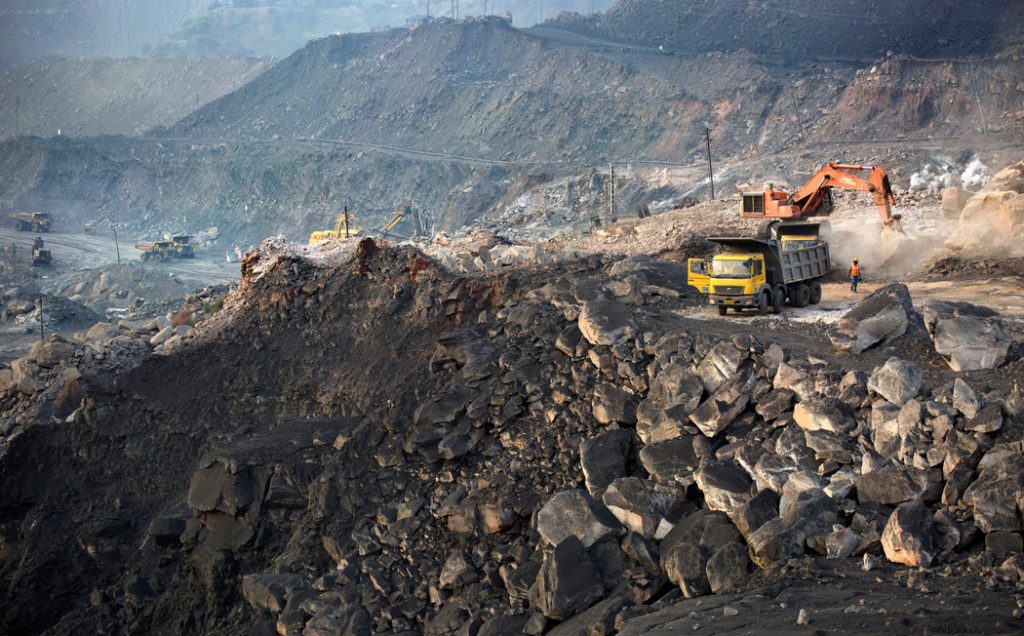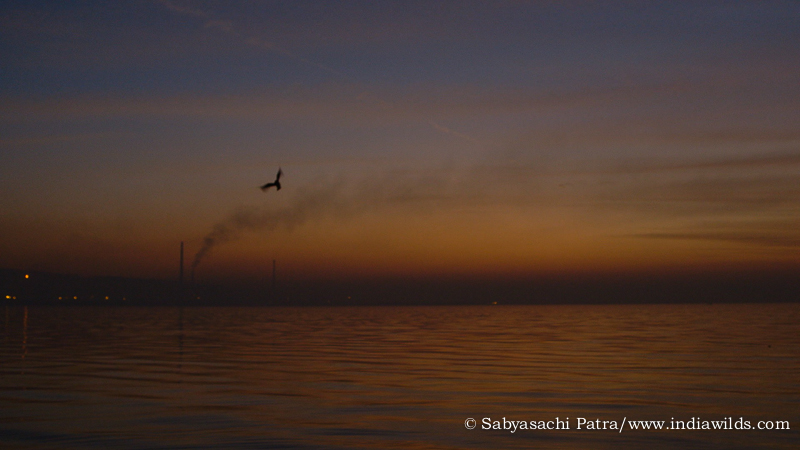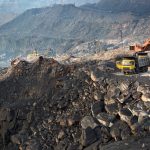IndiaWilds Newsletter Vol. 11 Issue IX
ISSN 2394 – 6946
Climate Crisis & India’s Role:
Climate Crisis is resulting in unprecedented change around the world. India this year faced very severe summer season. ( https://www.indiawilds.com/diary/indiawilds-newsletter-vol-11-issue-vi/) 10 cities in India were the hottest on earth during May-June 2019. Since 2004 India has seen 11 of the 15 warmest years. And along with India, the entire globe is bearing the brunt of Climate crisis.
Climate Change & melting sea ice:
In far off Antarctica, the sea ice is melting. It was a mystery that was first observed couple of decades ago and the scientists were not sure about the reason because the sea water was too cold and couldn’t have had melted the ice. So scientists found out that our wind pattern has changed since the beginning of the century and that is causing iceloss from the West Antarctic Ice Sheet in the Amundsen Sea. “Eastward wind anomalies at the shelf break enhance the import of warm Circumpolar Deep Water onto the Amundsen Sea continental shelf, which creates transient melting anomalies with an approximately decadal period. No anthropogenic influence on this process has been established. Here, we combine observations and climate model simulations to suggest that increased greenhouse gas forcing caused shelf-break winds to transition from mean easterlies in the 1920s to the near-zero mean zonal winds of the present day. Strong internal climate variability, primarily linked to the tropical Pacific, is superimposed on this forced trend. We infer that the Amundsen Sea experienced decadal ocean variability throughout the twentieth century, with warm anomalies gradually becoming more prevalent, offering a credible explanation for the ongoing ice loss. Existing climate model projections show that strong future greenhouse gas forcing creates persistent mean westerly shelf-break winds by 2100, suggesting a further enhancement of warm ocean anomalies. These wind changes are weaker under a scenario in which greenhouse gas concentrations are stabilized.” (West Antarctic ice loss influenced by internal climate variability and anthropogenic forcing; Holland Paul et. al., Nature Geoscience volume 12, pages718–724 (2019)).

Shifting winds and warm air temperatures contributed to the record-low extent of sea ice around Antarctica in November.
The United Nations Secretary General has said that to contain climate change actions need to be undertaken in several key areas. A new leadership group to drive industry transition to low carbon economy was also announced. However, there are several questions that need to be addressed.
Energy Transition:
Energy Transition has been identified as one of the key areas where our dependency on fossil fuel has to be reduced and power generation has to be shifted to renewable energy along with making significant gains in energy efficiency in all our products and processes. Efficiency can be a bad word if all it does is to ensure that we are solely focused on improving on areas, which should have been made redundant. So it would be important to focus on effectiveness.
There are various coal-fired thermal power plants working in India with various generating efficiencies. India’s coal-fired power plants have efficiency levels that are way below global average (Centre for Science & Environment study, 2015) with average efficiency of 32.8 percent and Co2 emissions 14% higher than China. This data is shocking to say the least. However, nothing much happened after this study came out. For this study NTPC (National Thermal Power Corporation) didn’t disclose its data and hence was rated based on publicly available data. This gives an escape route to blame the study.
These types of studies should have been mandated by the electricity regulatory commission to find out the actual state of affairs. Consumers do have the right to know about the state of affairs. If a power plant in their neighbourhood is spewing toxic air, higher CO2 and running at a much lower efficiency, then people can rightly question about the reason for existence of a particular power plant. However, today the data is not made public. The industries have a reason to avoid transparency and take short cuts. Pollution and Climate crisis is negatively impacting every one of us. So it is important that the citizens be given access to data. The power regulator has to mandate transparent online everyday data, which citizens and civil society groups can access at any point of time. Unfortunately there are very few groups in India who place the benefit of people above their business interests. The Government takes credit in waiving off all rules and legalities for businesses. The Minister for Environment, Forests and Climate Change routinely overrules the NBWL (National Board for Wild life) & expert committees to green light projects. Even data of daily pollution levels at different parts of cities are now not being shown. So monitoring and sharing data regarding power plants in a transparent manner with citizens and civil society is unlikely to happen anytime in India.
Till date the Green component in our economy and balance sheets are ignored. The pollution and impact on the fragile ecology is often willfully disregarded by the Government and its ministers. Environmental vandalism cannot continue forever as we the citizens are now facing massive health issues. People are bearing the brunt of climate crisis in form of sudden extreme weather events, which brings life to a standstill in not only cities but also in rural areas. Declaration of Red Alerts in metro cities during rains has become the new normal. Recently Mumbai faced flooding with severe loss of life and property. Commercial establishments obviously remain closed. When the financial capital of the country can be shut down due to sudden rains then it should have acted as wake up calls. However, these are becoming the new normal as the Government remains aloof and citizens try to cope up using their own limited means. We are clearly moving towards a tipping point where citizens will no longer be swayed by other partisan topics which are played to divert their attention from Climate Crisis triggered events. In all this the industry remains happily silent. In such an event how effective will be the impact of an industry leadership group to transition to a low-carbon economy is any ones guess.
Role of Industry:
The role of industry as a going concern is to make profits. Gone are the days when the companies were ethical and had concern for their surroundings and the people. In a letter to his son Dorab regarding development of Jamshedpur, Jamsetji Tata had written “be sure to lay wide streets planted with shady trees, every other of a quick-growing variety. Be sure that there is plenty of space for lawns and gardens. Reserve large areas for football, hockey and parks. Earmark areas for Hindu temples, Mohammedan mosques and Christian churches.”
The ethical values of the society has plunged. So today instead of taking the time consuming and costly option of ensuring that the business adheres to all rules and doesn’t harm environment and people, the corporate officials are more likely to take short cuts to get the environment and wildlife permissions. So when we are taking about industry transition, the industries are more likely to look at ways to make profit out of the Climate Crisis. No one is going to come due to an altruistic motive. Despite mouthing platitudes about how Greta Thunberg, a child, is raising her voice to call for School strike for climate and brining the climate issues to the discussion table even though elders are closing their eyes to it, the industry is deeply rooted in its current ways to change.
Open Access:
Instead of different companies trying to develop technologies for climate change mitigation and benefiting from it, let the companies show their leadership and create open access technologies. Let the funding be given to ideas from around the world so that people will ideas can innovate. However, the rich nations and capitalist model will never allow this to happen. In the absence of any global consensus, let a few countries emerge to create open access technologies to combat climate change.
Leadership for India:
Given the kind of frugal innovation that India is known for, if India partners with African countries as well as some of the smaller nations that are going to drown due to rising sea levels, then India can establish itself as a leader among nations. Let the Government give small grants to individuals as well as to startups and set a chain of innovation running and become the hub for climate resilient technologies.
The Prime Minister of India has announced that India will in future generate 450 GW of energy from non-fossil fuels. The grants for climate crisis mitigation innovation will neatly fit into India’s renewable energy plans. Together it can also help boost the manufacturing sector. So it is in India’s interests to focus on mitigating climate change. However, the Government of India has also been decimating India’s forests and instead creating plantations. This move is completely against the Nature-based solutions, which has been agreed upon as a key focus area by the UN Secretary General.
Urban Planning:
Today we are focusing on increasing the efficiency of our air conditioners so that they consume less energy. However, air conditioners can be a limited solution. ACs were created to fight the heat. However studies have shown that the use of Air Conditioners can give rise to upto 2 degrees centigrade increase in ambient temperatures. (https://www.indiawilds.com/diary/indiawilds-newsletter-vol-7-issue-v/) However, we have to look at the traditional Indian style of building constructions. The houses were different. Today concrete houses share walls with each other resulting in lack of airflow. Together with lack of green areas and no water bodies to cool the air, the concrete houses heat up and are causing a heat island effect. If housing societies have sufficient green areas then it helps in shade and lower temperatures. Unfortunately in the green areas they don’t plant trees. They just keep lawns, which take up more water. Tall hard growth trees give better shade and reduce the temperatures as well as do better in carbon sequestration. If a dense layer of trees are created then the overall temperatures can come down and also help in reducing the surrounding noise. Having ponds and lakes around buildings help the surrounding air to cool down. Unfortunately, people are in no mood to spare any areas for trees and ponds.
These days our metro cities, especially Mumbai, have buildings that are more than 50-60 floors tall. No one is bothered about additional energy spent in pumping water to such tall buildings? Neither are they bothered about the cost of power to operate lifts, as people will take lifts instead of climbing up the stairs. No fireman can be of help if there is an unlikely fire in those tall buildings, as the equipment of the firefighters won’t reach the top floors of those tall buildings. So the municipal building codes have to change. And people need to wake up to the reality that by staying in those high-rise apartments they are leading a more carbon heavy lifestyle as well as putting their life at risk.
People will flock to our larger cities, which don’t have land and are groaning and creaking under the massive population pressure for which they weren’t designed for. The Government of India has to rethink its development model and encourage industries to move away from our big cities so that our cities get decongested. That will significantly reduce our problems and carbon footprint. A holistic approach is the need of the hour. However, is it prudent to expect that a Government, which is known for its headline management, will change its spots and start doing what is right?
As they say Hope flows eternal in human breast. So keep on raising your voice so that hopefully we can correct some of the wrongs that our generation has done and the Earth can still be habitable as we don’t have a Planet B to move to when we destroy this planet.
Conservation News:
India to increase non-fossil fuel to 175 GW by 2022
New Leadership group to drive industry transition to low-carbon economy:
The United Nations Secretary-General António Guterres hosted the Climate Action Summit in New York ahead of the UN General Assembly. The Secretary-General called on all leaders – governments, the private sector, civil society, local authorities and other international organizations – to come with concrete, realistic plans that will boost ambition and rapidly accelerate action to implement the Paris Agreement.
Having the key focus on raising ambition and accelerate action to implement the Paris Agreement, the Climate Action Summit focuses on nine interdependent tracks, which are led by 19 countries in total and are supported by international organizations.
It is noteworthy to point that India along with Sweden, supported by World Economic Forum is leading the ‘Industry Transition’ track meeting.
A new initiative was launched on 23rd September at the UN Climate Action Summit to help guide the world’s heaviest greenhouse gas emitting industries toward the low-carbon economy.
India and Sweden together with Argentina, Finland, France, Germany, Ireland, Luxembourg, the Netherlands, South Korea and the UK, as well as a group of companies including Heathrow Airport, LKAB, Mahindra Group, Royal Schiphol Group, Scania, SpiceJet, SSAB, ThyssenKrupp, Dalmia Cement, DSM and Vattenfall, announced a new Leadership Group for Industry Transition that will drive transformation in hard-to-decarbonize and energy-intensive sectors.
This global initiative will be supported by the World Economic Forum, the Energy Transitions Commission, Mission Innovation, Stockholm Environment Institute, and the European Climate Foundation among many others in an ambitious, public-private effort, to ensure heavy industries and mobility companies can find a workable pathway to deliver on the Paris Agreement.
In welcoming this new public-private partnership, Professor Klaus Schwab, Founder and Executive Chairman of the World Economic Forum said: “There is a huge level of support and enthusiasm in the private sector to engage with governments and peers to reduce emissions across their operations and value chains.
Industry sector emissions, including those from hard-to-abate and energy-intensive sectors like steel, cement, aluminum, aviation and shipping are expected to be responsible for 15.7Gt by 2050. The international collaboration between countries and industry groups is critical to establish workable policy frameworks and incentives, and to enable joint investment into low carbon infrastructure.
In his statement Prime Minister Shri Narendra Modi said that “each one of us has to discharge climate responsibilities based on our situations and capacities. I hope that work under the industry transition track will facilitate early diffusion of technology and support to developing countries in this journey”.
Addressing a press conference, Union Environment Minister, Shri Prakash Javadekar said that the last two days have seen major takeaways including the decision that heavy industries who are doing their bit on their own, without any external help, have decided to have a low carbon path.
Equipment Discussions:
Canon announces EOS 90D and EOS M6 Mark II cameras
Canon has finally officially released the EOS 90D DSLR and EOS M6 Mark II mirrorless cameras. These cameras sporting 32.5 MP sensors. Earlier videos with their specifications had been leaked. Nevertheless, Canon has now confirmed that these two cameras have APS-C sized sensors like their predecessors. Both the two cameras have identical DIGIC 8 image processor. Both can record UHD 4K videos upto 30p and has DPAF in live view mode. The electronic shutter can shoot still photo at a humongous 1/1600th of a second.
The 80D could shoot still photos at 7fps. The 90D can click stills at 10fps. With 45 all cross point AF sensors, 100 percent view finder coverage and 27 points able to autofocus at f8 aperture, this is a very capable camera. The 80D is in our kit bag along with the 1DXII and other cameras and has proved to be very capable. I am sure the EOS 90D will also be similarly successful.
Read more :
Canon launches RF 15-35 f2-8 L IS USM lens and RF24-70 f2.8 L IS USM lens
Canon has announced two additional lenses to their RF mount lens line up. The RF 15-35 f2.8 L IS USM and RF24-70 f2.8 L IS USM lenses being launched as premium L series lenses priced at $2299 US Dollars. These lenses are similar in size to the corresponding EF mount lenses buthas image stabilization which is effective for 5 stops and also works with the inbuilt image stabilization of the current RF mount camera bodies. By launching these premium lenses Canon is indicating it’s serious intention in making RF as the successor of the EF mount. Canon has also indiated that the RF mount lenses are better than the EF mount lenses as the EF mount was restricting its ability to design better quality glass than is currently possible.
The details of the lens elements used in these lenses is not provided by Canon. These two lenses will be available in late September 2019. And Canon has also indicated that by end of this year it will be launching a RF70-200 f2.8 IS USM lens. I am sure next target would be telephoto lenses in the RF mount.
Read more:
Blackmagic Design announces Video Assist 12G monitor recorder
Blackmagic Design announces Video Assist 12G monitor recorder
Sony announces FX9 4K camcorder with 6K sensor
Sigma launches FF Classic Prime Line of Cine Lenses
Natural History
COUNTRY NOTEBOOK: M. Krishnan: ‘A Tiger of the Treetops‘ shared By Saktipada Panigrahi
https://www.indiawilds.com/forums/showthread.php?8852-Country-notebook-m-krishnan&p=87912#post87912
Wildlife Photography
Tiger in Sunderbans by Vipin Sharma
https://www.indiawilds.com/forums/showthread.php?19281-Sunderbans-diary-Jul-19
Tiger mating by Sandipan Ghosh
https://www.indiawilds.com/forums/showthread.php?19277-Caught-in-the-Act
Leopard by Shyamala Kumar
https://www.indiawilds.com/forums/showthread.php?19268-The-Curious-leopard
Nightjar by Mrudul Godbole
https://www.indiawilds.com/forums/showthread.php?19284-Nightjar
Emerald-Cuckoo-(Juvenile) by Samrat Sarkar
https://www.indiawilds.com/forums/showthread.php?19265-Emerald-Cuckoo-(Juvenile)
Metallic Flea Beetles by Abhishek Jamalabad
https://www.indiawilds.com/forums/showthread.php?19287-Metallic-flea-beetles-mating
Common Silverline by Prajwal Ullal
https://www.indiawilds.com/forums/showthread.php?19285-That-curious-look
Leaf Weevil by Arun Acharjee
https://www.indiawilds.com/forums/showthread.php?19294-Leaf-Weevil
Tutari flowers by Abhishek Jamalabad
https://www.indiawilds.com/forums/showthread.php?19289-Tutari-flowering-as-dusk
Tiger in Corbett by Sabyasachi Patra
https://www.indiawilds.com/forums/showthread.php?19288-Tiger-in-Corbett
This is the 129th issue of IndiaWilds. The cover page photo is that of a wild Gaur (Bos gaurus) snorting. Generally these massive gaurs avoid people. However, when provoked due to some reason they can cause grievous injury. This image of the gaur can be philosophically seen as representative of nature. We keep on harming nature. We clear forests, we dig up hills and use the stones for building houses and roads. We cut up mighty mountains for roads, railways, bridges and other projects. We stop flow of rivers by creating dams. Nature keeps on accepting our blows. However, whenever we go too far, nature hits back with fury. Many lives are lost and civilisations have been wiped away in the past due to violent backlash of nature. Today Earth is facing an unprecedented Climate Crisis. Unfortunately we still are trying to find an opportunity and make money out of it. All nations shouuld have been fighting this battle together. Nevertheless, there are lots of things that can be done to successfully fight this battle. Provided we are ready to act. And The Time is Now.
I look forward to your inputs and support in preserving the last tracts of wilderness and wildlife left in our beautiful country and raising awareness about it. For other interesting articles and images check –
http://www.indi
To post in the IndiaWilds forums, you can register free of cost using your Full Name as user id at:
http://www.indiawilds.com/forums/register.php
If you are already a member of IndiaWilds and have forgotten your user id and/or password you can mail to:
administrator@indiawilds.com
If you want to contribute original articles, or for any image enquiries please send a mail to:
administrator@indiawilds.com
Regards,
Sabyasachi Patra
Profile | Contact Us | Facebook | Diary | Equipment reviews | Forums | IndiaWilds You Tube Channel
Please post your views and feedback in the comments below.
- GoPro Hero 12 Black - 6 September,2023
- Leopards: The Last Stand - 2 July,2023
- Drifting in the Waters of Sundarbans - 26 March,2023














Leave a Reply